Share On Social!
To inform and educate the San Antonio community on just how much sugar is in the beverages people consume daily, health officials and community leaders partnered to launch the bilingual Sugar-Packed marketing campaign. After San Antonio’s previous attempts to tackle sugary drink consumption fizzled out, Nelson Wolff, judge of Bexar County, which includes San Antonio, and his partners reignited a campaign against sugar with hopes to change the way residents look at sugar in beverages and its effect on health. The campaign includes print and online materials, including a sugar calculator tool, educational brochures, and posters.
EMERGENCE
Awareness: In 1997, Bexar County’s Health Collaborative formed as a coalition of health agencies that aim to improve the health status of the community by working together.
A few years ago, the Collaborative and several agencies, including the San Antonio Metropolitan Health District (Metro Health) and Bexar County’s Department of Community Resources, were assessing health issues of local residents.
About 68% of Bexar County adults were overweight or obese in 2008, federal data showed.
Latino children, in particular, are 38.9 percent overweight or obese.
A big concern started to emerge: diabetes.
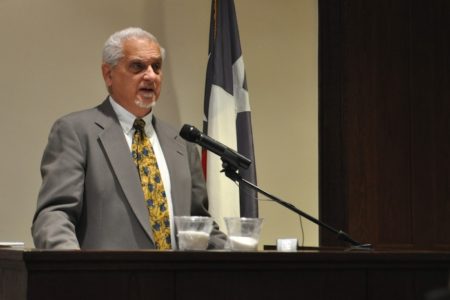
Learn: 1 in 10 adults in San Antonio overall suffered from type 2 diabetes, with Latinos having higher rates (13%) than whites (6%), data showed.
Public health officials grew more concerned by Mayor’s Fitness Council (MFC) research that uncovered poor local nutrition habits, including Latino high-school students in Bexar County who were among those leading the way in consuming soda more than one time per day.
Dr. Thomas Schlenker, director of Metro Health and a practicing pediatrician, knew the facts on how sugar affects obesity and wanted to show the community the truth about the sugar they drink in sodas.
The American Diabetes Association states that people who consume 1-2 12-ounce cans a day of sugary drinks are at a 26% greater risk of developing type 2 diabetes, linking sugary beverage consumption to diabetes.
“Why focus on soda? Because 80,000 San Antonians have broken the everyday soda habit, and ending the daily soda habit is the first step to a healthier lifestyle. You have to start somewhere,” Schlenker said in an article from 2014.
But how would he bring this issue to the community?
Frame Issue: He and other health officials wanted to start a public education campaign to help reduce sugary drink intake in San Antonio.
The goal was to fight the high rates of obesity and diabetes in the community by reducing the percentage of sugary drinks consumed on a daily basis to less than 50%.
DEVELOPMENT
Education/Mobilization: Using research, Schlenker came to the San Antonio City Council in 2014 with plans to launch a major public education campaign to show how sugary beverages contribute to local obesity.
After approval from then-Mayor Julian Castro, Schlenker began working with Rudy Ruiz, CEO of Interlex Communications, to bubble up educational campaign ideas. Interlex supports multiple nonprofits with public health missions.
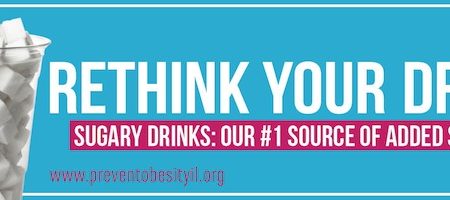
Gathering resources, statistics and surveys, Ruiz started studying the best awareness campaigns from around the country. Researching other campaigns, like the Illinois “Rethink Your Drink” campaign, they wanted to bring awareness to just how much sugar is in all the beverages San Antonio drinks on a daily basis in favorite drinks like soda, juice and sports drinks.
Ruiz talks about their process in the Rivard Report:
“We went to work, reviewing best practices and research from around the country. We developed numerous concepts and messages, fielded surveys among stakeholders, and conducted focus groups to shape a campaign to motivate San Antonian’s to reduce their consumption of sugary drinks…But we didn’t anticipate what happened next.”
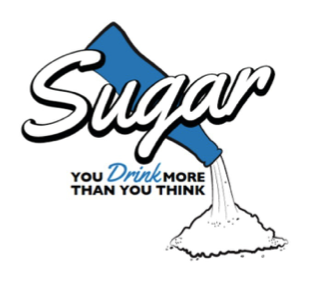
Debate: Council members were divided in supporting the campaign.
The city manager’s office required the campaign planning team to include a representative from Coca-Cola, as mentioned in the Rivard Report article.
The sugary drink representative on the campaign stated all the campaign’s facts were too “negative” in their efforts to inform the public of the actual effects that sugary beverages can cause when consumed, Ruiz described.
“I was taken aback. Having worked on similar campaigns in California, Illinois, and Washington, D.C., I had never witnessed the participation of the very industry whose products we were trying to dissuade people from consuming…I pushed myself to keep an open mind…surely, she (the Coca-Cola rep) would ‘open happiness.’ Instead, all that was opened was a can of worms,” Ruiz said.
The effort was abandoned soon after.
But the campaign wasn’t over.
ENACTMENT
Activation: Concerned by the report that 6 of 10 adults and 3 of 10 high school students were overweight or obese in Bexar County, including higher rates among Latinos, Nelson Wolff took the baton.
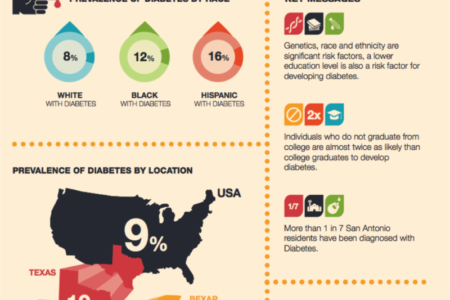
Wolff, San Antonio’s mayor from 1991-95 and currently the Bexar County’s Judge, noticed the county was not measuring up to the new 2015 national dietary health guidelines.
“I thought the City was going to take the lead, but when I saw they didn’t … we had to step up,” Wolff said.
Wolff and the county reinvigorated the campaign with a courthouse press conference to vote on a resolution on Feb. 26, 2015, amid key supporters, including Schlenker, Dr. Bryan Alsip, executive vice president of the University Health System, and Elizabeth Lutz, director of the Health Collaborative.
“It’s an education campaign, to provide information to them (the public). We are not trying to tell people what to do; we are just giving the facts,” Wolff said.
Frame Policy: The court passed the resolution and a planning meeting was set up to bring together leaders, business, media and other groups on March 5, 2015.
They rebranded the group the Bexar Healthy Beverage Coalition.
“We continued to add members that were interested in being a part,” Alsip said. “We really wanted to include not just those that were involved in the original coalition but also bring in the work place, bring in schools, and even have some conversations—which I did early on—with beverage companies.”
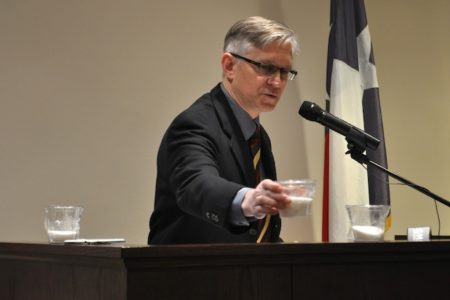
They didn’t envision the campaign to focus on drinking more water or stopping soda drinking, like other campaign ideas from around the country.
Instead, the campaign would be educational, helping people understand that their favorite sugary beverages are loaded with more sugar than needed in a healthy diet. Their goal was to keep the campaign at a grass roots level, working within communities and using the website and brochures as resources to educate.
Known for the one-on-one work with communities, the Health Collaborative planned to keep the campaigns conversation going within health awareness events.
“The subject of sugary beverages carries a lot of different political overtones, so this campaign really needed to be something that was followed by the community. We were brought in (the Health Collaborative)… to ensure that it (the campaign) didn’t become something that could be washed away,” Lutz said.
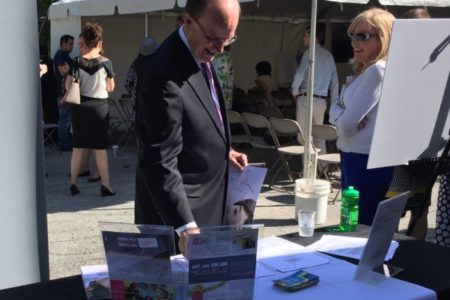
Change: On June 9, 2015, the new coalition had a press conference to officially announce the start of the Sugar-Packed Campaign, which included a website and social media marketing, as well as printed brochures and posters.
IMPLEMENTATION:
Implementation: The Sugar-Packed Campaign website, made by Tiny Roar Creative, includes a catchy video, as well as brochures and print materials from Interlex in English and Spanish.
The sugar calculator tool is the most interactive part of the site, showing consumers how to calculate the sugar in their beverages from grams to sugar packets.
The sugar calculator even shocked Wolff.
“[Sugar is] a biggie. Most people don’t realize just how much they are taking; this is simply providing that information to them. Ironically I didn’t know that myself, but 16 packs are in one 20-ounce cola, oh my gosh!” he said.
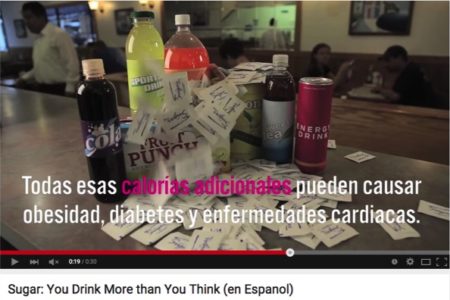
Alsip agreed.
“People often are unaware of how much (sugar) is in that particular beverage, because they are always listed in grams, and that’s kind of hard to conceptually change, so what we put on the website is, how many teaspoons or how many packets of sugar are in a particular type of drink, so people can think about that as they consume a beverage,” he said.
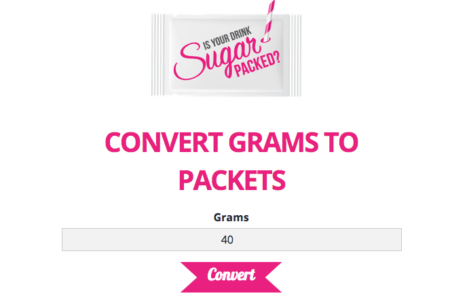
Equity/Sustainability: The sustainability plan for the campaign is to keep educating the community at a grass roots level. The campaign will consist of working in and with schools, and having hands-on events with educational materials being available to all schools and support groups.
“We’re trying to identify the school districts that are most responsive, Southside has been very responsive, and they don’t allow sugary drinks at all,” Wolff said. “They are stepping up on sugar drinks, many districts in the past took money from the soda companies, but I think they are stepping up.”
They also aim to produce free TV spots and engage neighborhoods in community events, Wolff and Lutz said.
“We are getting partnerships going to get the branding up on billboards or wraps…the bulk of the work is still yet to be done, which is really part of the education campaign, going into communities delivering presentations and getting them into the conversation,” Lutz said.
Many larger cities have taken similar approaches, trying to help consumers think about what they drink.
Collaborations and partnerships continue to be built in San Antonio’s largely Latino populated city, to tackle the sugary beverage consumption and help consumers ask the question, “How much sugar is in my drink?”
“As you can see there is some tracking downward (of sugary beverage consumption) around the nation, and we hope to see that tracking occur here also,” Wolff said.
January 6th, 2016 Update: Judge Wolff will be presenting an announcement in a press release to the public on January 6th at 11 am at the Bexar County Courthouse downtown San Antonio, to kick off the Bexar Healthy Beverage Coalition efforts in regards to the Sugar-Packed campaign. Speakers for the press release include key players of the coalition including Wolff, Dr. Bryan Alsip, Dr. Robert Ferrer, Professor of Family Practice at the UT Health Science Center and Jennifer Herriott, Assistant Director of the San Antonio Metropolitan Health District.
Additional Links:
Partners in the Bexar Healthy Beverage Coalition:
Salud America! / IHPR
American Diabetes Association
American Heart Association
Bexar County
Bexar County Medical Society
Bexar County School Board Coalition
The Health Collaborative
Interlex Communications
San Antonio Business Group on Health
San Antonio Independent School District
San Antonio Metropolitan Health District
Southside Independent School District
South Texas Academy of Nutrition & Dietetics
Tiny Roar Creative
University Health System
Witte Museum
YMCA
This success story was produced by Salud America! with support from the Robert Wood Johnson Foundation.
The stories are intended for educational and informative purposes. References to specific policymakers, individuals, schools, policies, or companies have been included solely to advance these purposes and do not constitute an endorsement, sponsorship, or recommendation. Stories are based on and told by real community members and are the opinions and views of the individuals whose stories are told. Organization and activities described were not supported by Salud America! or the Robert Wood Johnson Foundation and do not necessarily represent the views of Salud America! or the Robert Wood Johnson Foundation.
ABOUT THE PROGRAM
Salud America! The RWJF Research Network to Prevent Obesity Among Latino Children is a national program of the Robert Wood Johnson Foundation. The program aims to educate researchers, decision-makers, community leaders, and the public in contributing toward healthier Latino communities and seeking environmental and policy solutions to the epidemic of Latino childhood obesity. The network is directed by the Institute for Health Promotion Research at the University of Texas Health Science Center at San Antonio.
For more information, visit http://www.salud-america.org.
By The Numbers
1
Supermarket
for every Latino neighborhood, compared to 3 for every non-Latino neighborhood
This success story was produced by Salud America! with support from the Robert Wood Johnson Foundation.
The stories are intended for educational and informative purposes. References to specific policymakers, individuals, schools, policies, or companies have been included solely to advance these purposes and do not constitute an endorsement, sponsorship, or recommendation. Stories are based on and told by real community members and are the opinions and views of the individuals whose stories are told. Organization and activities described were not supported by Salud America! or the Robert Wood Johnson Foundation and do not necessarily represent the views of Salud America! or the Robert Wood Johnson Foundation.



